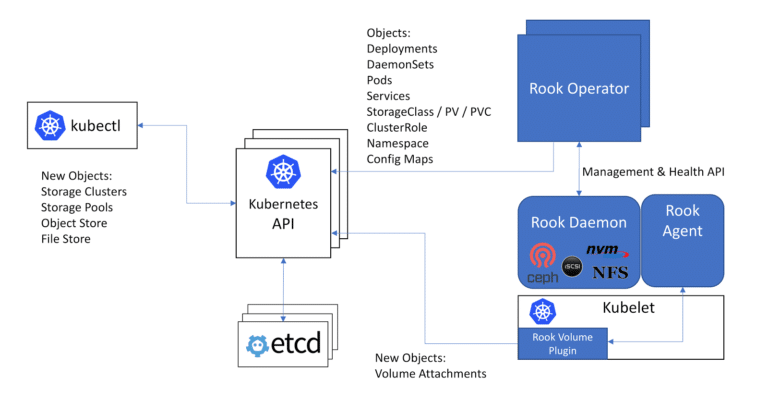Rook has been accepted as an inception-level project, under the Cloud Native Computing Foundation (CNCF) Graduation Criteria v1.0. The Technical Oversight Committee (TOC) has accepted Rook as the 15th hosted project alongside Kubernetes, Prometheus, OpenTracing, Fluentd, Linkerd, gRPC, CoreDNS, containerd, rkt, CNI, Envoy, Jaeger, Notary and TUF.
The CNCF provides every project an associated maturity level of either inception, incubating or graduated. An inception-level project is required to add value to cloud native computing and be aligned with the CNCF charter.
Bassam Tabbara, CEO of Upbound and creator of Rook, said, “Rook is essentially using the operator pattern to extend Kubernetes to support storage systems. We’ve added a concept of a storage cluster, a storage pool, an object store and a file system. Those are all new abstractions that we’ve used to extend Kubernetes.” The project enables organizations to modernize their data centers with dynamic application orchestration for distributed storage systems running in on-premise and public cloud environments.
Rook brings File, Block and Object storage systems into the Kubernetes cluster, running them seamlessly alongside other applications and services that are consuming the storage. By doing so, the cloud-native cluster becomes self-sufficient and portable across public cloud and on-premise deployments.
Instead of building an entirely new storage system which requires many years to mature, Rook focuses on turning existing battle-tested storage systems like Ceph into a set of cloud-native services that run seamlessly on-top of Kubernetes. Rook integrates deeply into Kubernetes providing a seamless experience for security, policies, quotas, lifecycle management, and resource management.
Rook will expose storage through CSI to Kubernetes. As a CNCF hosted project, it will be part of a neutral foundation aligned with technical interests, receive help with project governance and be provided marketing support to reach a wider audience. Community support has increased as companies and users deploy it in their cloud-native environments (on-premise and public cloud).












































































